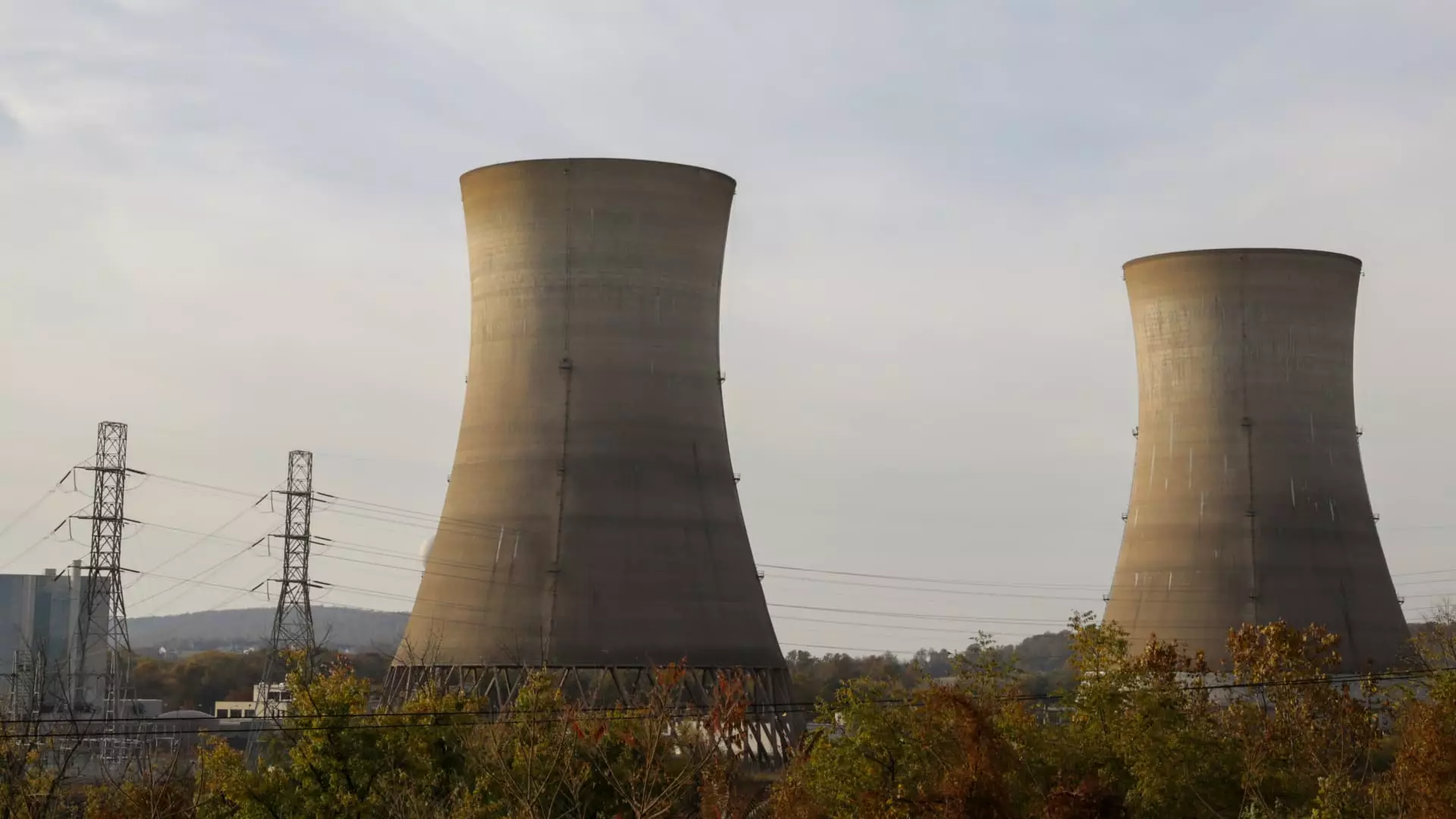The momentum surrounding uranium as a preferred energy source has gained unprecedented traction, driven by an insatiable hunger for reliable energy, particularly in a world increasingly reliant on technology. The likes of John Ciampaglia, CEO of Sprott Asset Management, point to substantial shifts that signal a renaissance in nuclear energy. As industries thirst for energy to run artificial intelligence data centers, the rhetoric around uranium isn’t merely investment chatter anymore; it’s becoming a critical discourse about energy security in the contemporary age. Yet, this excitement begs critical scrutiny—not every industry hype reliably translates into sustainability or long-term success.
The Sprott Physical Uranium Trust and Sprott Uranium Miners ETF have witnessed dramatic increases, yet these funds exemplify what can be termed speculative enthusiasm rather than a guaranteed future. The sector’s recent performance sounds appealing, with growth figures like 22% and 38% sprouting up like spontaneous weeds. But can we genuinely advocate for long-term viability based solely on short-term gains? Herein lies the paradox of investing in industries prone to boom-and-bust cycles, and the question lingers: Is the renewed faith in uranium genuinely founded in robust data or merely in the glow of recent highs?
Nuclear Power — The Zero-Emission Savior? Or a Mirage?
Ciampaglia lauds nuclear energy for its reliability and minimal greenhouse gas emissions, positioning it as a beacon of hope for energy-intensive sectors. In one breath, he emphasizes the energy-dense nature of uranium compared to traditional fossil fuels, which is compelling on the surface. However, it is essential to ask whether we are truly ready to pivot towards a forgotten energy sector with a history marred by accidents, public skepticism, and persistently high costs of waste management.
Take the recent energy crisis in Europe as a case study. While its implications have reignited conversations about energy security, the issues have also laid bare the fragility of relying heavily on any singular energy source. Nuclear energy’s track record is inexorably tied to monumental disasters, which loom large in public consciousness despite Ciampaglia’s claims of a long-term renaissance. Hence, while nuclear might present an immediate answer to energy needs, the shadow of historical failings must not be brushed aside.
The Chill of Institutional Hesitance
The sentiment among some heads of firms, like Jan van Eck, captures a critical conundrum: while nuclear technology has supportive advocates, substantial infrastructural investments face unforeseen delays. Van Eck’s recognition of the complexities involved in building new nuclear facilities serves as a sobering reminder against the backdrop of instant gratification that often guides investment behaviors. In a world devoted to the immediacy of digital transactions, the nuclear industry may struggle to satiate that appetite, leaving investors to grapple with the unglamorous realities of timelines and patience.
Moreover, the prospect of political interventions to expedite development can be both a boon and a bet. While the Trump administration’s enthusiastic stance toward nuclear power can catalyze growth, such leaps in policy could threaten to overshadow the rigorous safety protocols that should dictate the longstanding values of energy production. Reacting to geopolitical shifts and energy crises doesn’t allow for hasty decisions around nuclear expansion; rather, it should encourage measured, thoughtful approaches towards sustainable energy practices.
A Balancing Act: The Energy Transition Dilemma
Navigating the future of energy means embracing a diverse energy portfolio, of which nuclear could play a pivotal role. The narrative that frames uranium as the hero of the energy crisis fails to include a broader spectrum of renewable alternatives that deserve equal attention. Solar, wind, and hydro technologies continue to demonstrate promising advancements that challenge the notion of nuclear as a low-carbon panacea.
Moreover, as we march further into an era of heightened climate awareness, we must question whether it’s prudent to dedicate substantial capital back into an infrastructure connected with such significant risks. The environmental and societal ramifications tethered to nuclear energy do not simply dissolve with economic incentives; they require societal consensus and robust regulatory frameworks.
The future of uranium may be less about its immediate returns and more about defining a long-term relationship with energy diversity. It is time for investors and policymakers alike to dive deeper than the superficial allure of profit margins and engage in shaping a sustainable energy discourse that places equal weight on safety and accountability.

